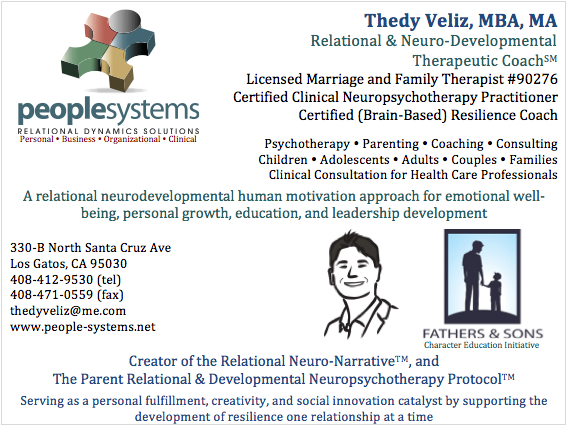Working with Adolescents
“Addressing the behavior itself through external rewards or punishments often does not consider whether the child’s inner world had sufficient clarity and organization to generate adaptive behaviors. Propping up behaviors rather than laying a proper inner-world foundation might manage a short-term problem without providing the child with the skills to manage all kinds of challenges and difficulties in the future” (Hughes, 2009).
- Daniel Hughes, PhD
Adolescents not only need to manage stress pertaining to their daily environment, but are also starting to develop their own identity while coming to the realization of the need to become more responsible for their future. At this stage, adolescents start to feel more stress related to their academic and extracurricular activities while becoming very aware of the importance of their physical appearance, dating relationships, and status within their peer group. All of these experiences can at times result in multiple thoughts and emotions which the adolescent might be unable to identify, express and process. Unexplored emotions can result in 'acting out' behavior which we as a society might not be very effective in dealing with. While stopping the behavior appears to be the most conventional intervention, adolescents’ emotional and physical well-being can benefit from interventions that concentrates on helping them self-regulate (e.g., identify, express and process their emotions), while helping the parent develop and implement relational techniques that focus more on understanding the adolescent’s internal world rather than only attempting to correct the behavior.
Focusing on Emotional Stress
While adolescents might engage in many troubling and risky behaviors, my experience has taught me that I am able to empathize with the adolescent’s situation when I attempt to understand the effect that stress might be having on the adolescent’s ability to be motivated to learn, to self-regulate his thoughts and feelings, and to make the right behavioral choices.

My Relational Approach with the Adolescent
While working with a child is challenging because of their inability to express their internal feelings states, working with adolescents presents other challenges as in many cases adolescents are unable to trust adults in their lives (e.g., parents, counselors, coaches, teachers), and find it even harder to trust a therapist who in their eyes is just another adult that might be unable to understand them as they struggle to understand themselves.
I have found that I have a very limited amount of time to convince an adolescent client that I am worth trusting. I usually assume that this amount of time is about 20-30 minutes from the time that I first meet the client.
When dealing with adolescents that are angry for having been ‘sent’ to a therapist, I find that it puts us both at ease when I join with the adolescent’s current state by validating his anger, frustration, defiance and/or oppositionality. I try to put myself in their situation by trying to feel what it would be like for the adolescent to be sitting in front of a stranger (i.e., me) knowing that his parents might have already told me ‘everything that is wrong with him.’ What I find interesting about this oppositional dynamic is that even though adolescents might present as uninterested and uncooperative, my experience tells me that in most cases deep inside they are in desperate need for someone to see their side of the story – something that at times they might have been unable to express on their own to other adults in their lives. When working with challenging adolescents, I find that validating their feelings and showing interest in their experience makes them feel safe to ‘give me a chance.’
My Relational Approach with Parents
While children can push a parent’s ‘buttons,’ adolescents can become experts at engaging in this type of warfare with their parents. I find that the relationship between adolescents and parents needs to be strengthened not only because of the behavioral challenges being exhibited by the adolescent, but also because of the parent’s sense of guilt that might come across as anger towards the adolescent. In many cases, during the parent therapy component of treatment, parents become aware of a mixture of guilt, shame, sadness and/or disappointment which reside underneath their possible feelings of anger and frustration all of which could be stirred up by their adolescent’s behavior. As these emotions underneath the anger start to bubble up, we can then move on to repairing and improving the relationship between the adolescent and her parents.

Repairing the Relationship and Preparing to Transition
Once adolescents and parents are able to speak a relationally oriented language which is focused on how each person feels (i.e., the emotions underneath the frustration and anger), family sessions will help to bring the family together by interacting with one another in a way that many have never experienced before. The common language is based on empathy, acceptance, and unconditional positive regard. My approach to repairing the attachment relationship has been influenced by the work of Daniel Hugues, PhD and his Dyadic Developmental Psychotherapy methodology (Hughes, 2006; Hughes, 2009; Hughes, 2011; Hughes & Baylin, 2012; Baylin & Hughes, 2016).
At some point during this stage, I am able to help the parent and the adolescent connect in a relational way in which adolescents are able to express their fears related to feeling bad, inadequate, or feeling like they ‘might not be loved by their parents.’ This point of the therapy is critical, as parents are usually able to witness a part of their adolescent that they might have not experienced before. Very quickly, the adolescent’s behavior becomes a part of the challenge that is being addressed rather than the challenge itself. Parents start to recognize that they might have confused the adolescent with the behavior, and in showing their disapproval for the behavior; they might have unintentionally communicated disapproval for the adolescent himself. What counts here is not what the parents' intentions were, but rather what adolescent understood and finds to be true in their internal emotional world.
What I have found is that there appears to be lots of room for misunderstandings when people are trying to love one another. As any adult involved in a long-term relationships can attest, love is a difficult enterprise, and this also applies to a relationship between parents and adolescents.
At the end of this stage, I focus on helping parents to learn interventions that they can practice on a regular basis to assist adolescents identify, express and process (i.e., self-regulate) their internal states while maintaining a strong relationship with the adolescent. In essence, the therapeutic interventions that are learned by parents during therapy become part of the parents’ toolbox for ensuring the adolescent’s ongoing healthy development.
References
- Baylin, J. & Hughes, D. A. (2016). The neurobiology of attachment focused therapy: Enhancing connection and trust in the treatment of children and adolescents (Norton Series on Interpersonal Neurobiology). WW Norton & Company.
- Hughes, D. A. (2006). Building the bonds of attachment: Awakening love in deeply troubled children. Jason Aronson.
- Hughes, D. A. (2009). Attachment-focused parenting: Effective strategies to care for children. WW Norton & Company.
- Hughes, D. A. (2011). Attachment-focused family therapy workbook. WW Norton & Company.
- Hughes, D. A., & Baylin, J. (2012). Brain-Based Parenting: The Neuroscience of Caregiving for Healthy Attachment (Norton Series on Interpersonal Neurobiology). WW Norton & Company.
